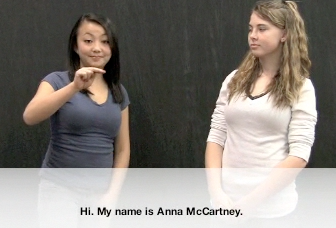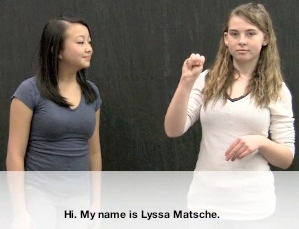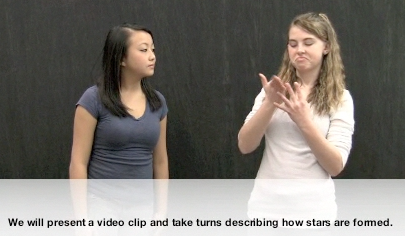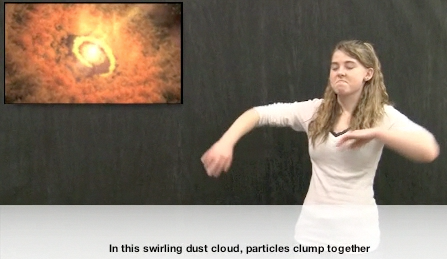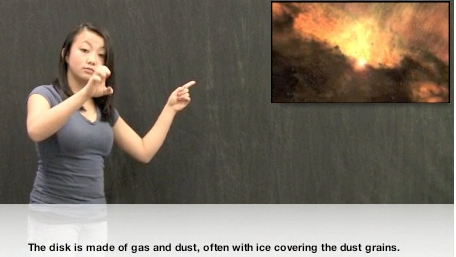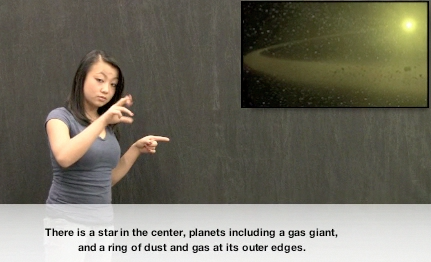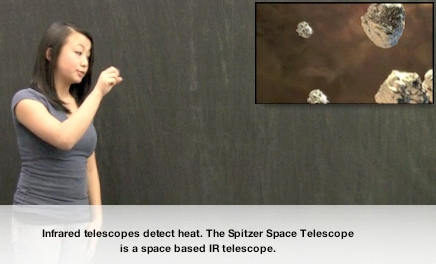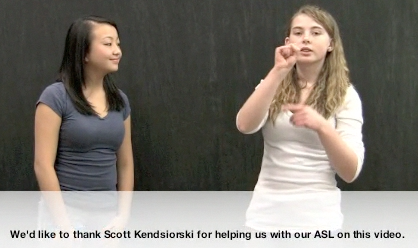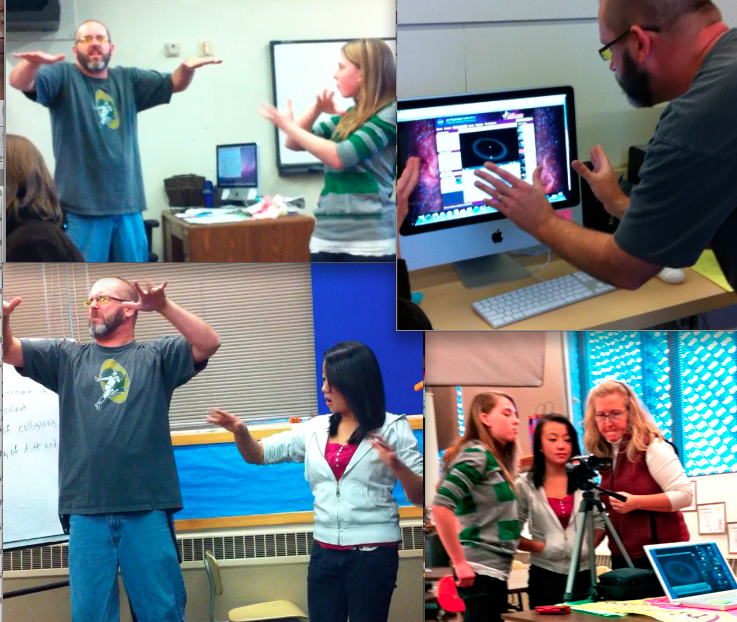Stars and How They Form - videos with sign language
We are Anna McCartney and Lyssa Matsche. We are from the Wisconsin School for the Deaf.
We created an ASL video with captions, but no audio, to explain the simulations that Luisa presented during the June 2010 workshop.
Wish to thank Dr. Luisa Rebull. 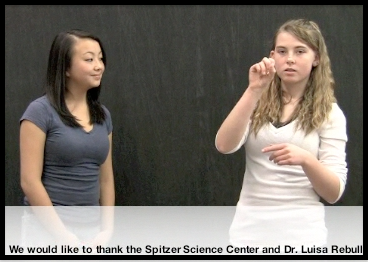
Here is a link to the video. You may need to use Safari to view it.
http://wiki.wsd.k12.wi.us/users/gartncm/
Behind the Scenes as we prepare for making the video and practice the sign language we will use.
Jen VanDerMolen's Reflections about Deaf and Hard of Hearing students and opportunities for STEM learning and careers.
cience is one of those subjects that high school and college students shy away from unless they have a natural affinity towards it. This is probably even truer for Deaf students. In talking with Deaf adults, many have shared that at times teachers actually encouraged them to stay away from higher-level science activities and studies because it was thought to be too difficult for a Deaf person to understand the concepts and the vocabulary. This is not true at all.
King Jordan, former president of Gallaudet University was quoted saying, ‘Deaf people can do anything but hear.’ They can do science and can bring a fresh perspective to the science world because of their approach to learning. Because of their experiences and the way Deaf individual interact with the world, they are able to propose new ideas and are capable of making great life changing contributions to the Science and Technology fields that will impact both Deaf and hearing people. It is imperative that they are given opportunities to participate in higher level science activities to help encourage their involvement in the Science world.
Deaf students need adaptations and accommodations so that that information is accessible to them. Through our involvement with NITARP, we have been able to demonstrate and teach our scientists and collaborators valuable and unique accommodations for Deaf students in general. We have found that beneficial accommodations for our Deaf students include: using sign language to communicate the information, providing a visual demonstration, showing images or short video clips, using a note taker and allowing for ample time for hands-on work. Making information and instruction more visual for Deaf students is vital to their education and understanding of new material. Deaf students experience much of their world through their eyes therefore they are quick at picking out patterns visually and often times learn information by just observing. When presenting new visual information to Deaf students, it is important to make sure they have ample time to look at the visuals first and then be presented with the information through lecture.
